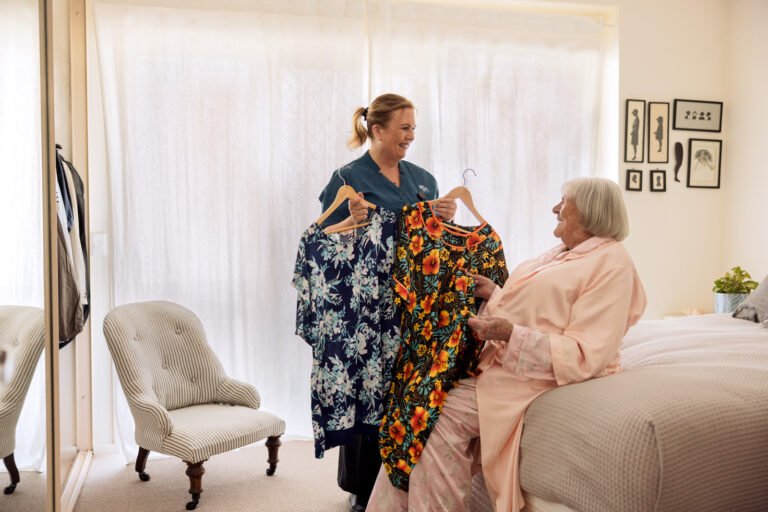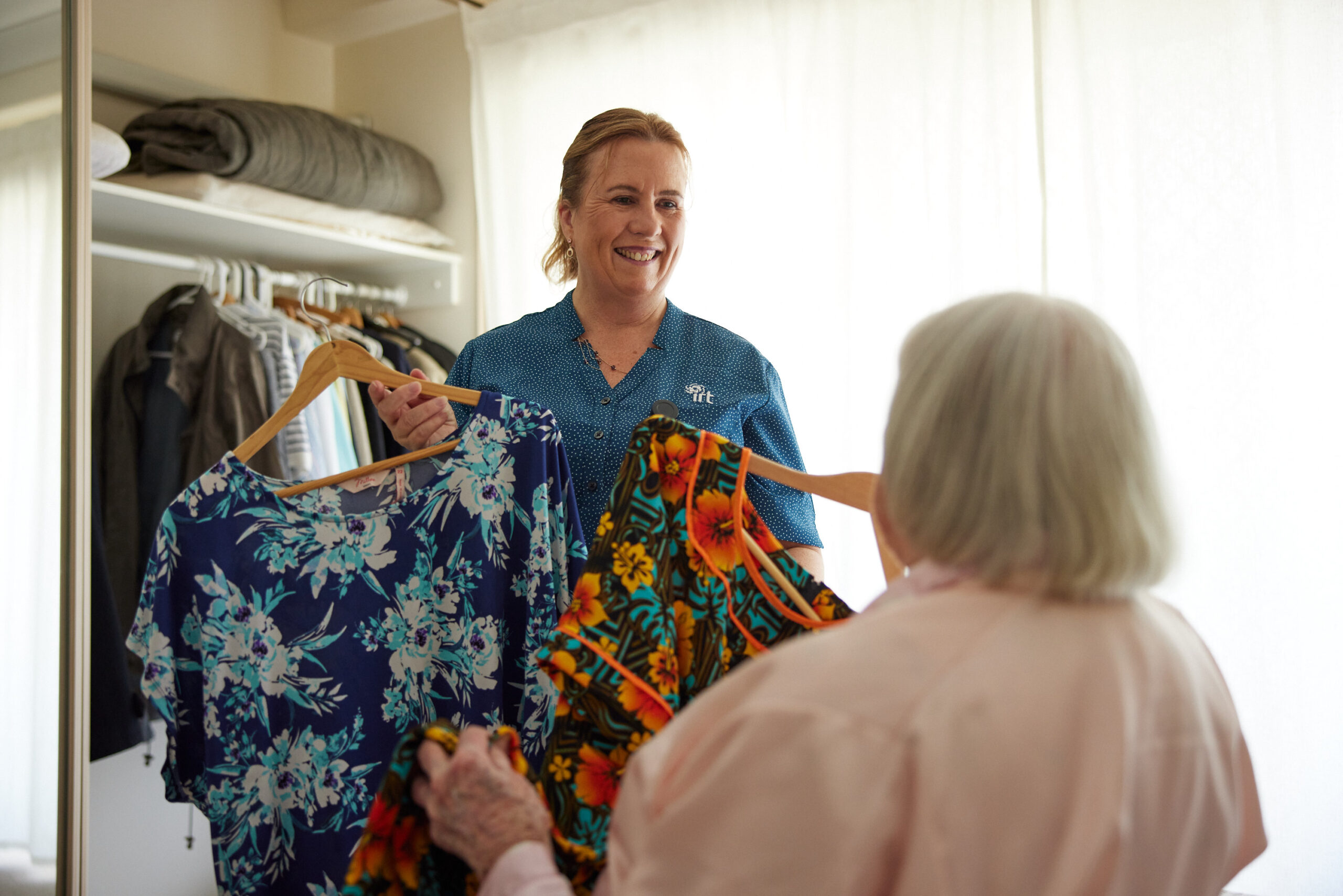What is the difference between CHSP and Home Care Packages?
If you’re interested in getting some home care, you’ve likely heard of the terms ‘Home Care Package’ and ‘Commonwealth Home Support Program.’

Home Care Packages (HCP) and Commonwealth Home Support Programme (CHSP) both have the same overall objective: to help older Australians to continue living independently at home. However, they each incorporate different levels of care and support and have different eligibility criteria and payment systems.
So, what’s the difference, and what option is best for you?
What is the Commonwealth Home Support Programme?
The Commonwealth Home Support Program (CHSP) is funded by the Australian Government and is an entry-level program that aims to:
- help people live as independently as possible
- focus on working with people to do things for themselves, rather than doing things for them
- give a small amount of home care assistance to a large number of people.
What services are available under the CHSP?
Services offered through CHSP will be dependent on individual needs. The assessment process is a personal assessment that a qualified aged care assessment team can perform in a home setting. This will determine how you want to improve your overall health. A GP or specialist can also work for the Regional Assessment Service (RAS) in this respect.
Most people in the CHSP only need one or two services to help them stay independent. CHSP services can include things like:
- help around the house
- transport to and from appointments
- meal preparation
- personal care
- home modifications
- social support
- nursing and allied health
- planned respite care.
If you’re having trouble with everyday tasks and feel that a little support could improve your health and wellbeing, the CHSP could be right for you.
Am I eligible for the CHSP?
Eligibility for this program is based on your age and support needs as determined through a face-to-face assessment by a government assessor. You can check if you meet the requirements for the CHSP on the My Aged Care website, or if you’re ready, you can apply for an assessment now.
If your CHSP assessment is approved, you will need to select a service provider to deliver the services you need. There are around 1400 CHSP providers in Australia, including IRT Group. The service provider must work with you to develop a care plan based on your individual needs, support you to continue doing things yourself if you’re able to, review support services every 12 months, and meet the Aged Care Quality Standards.
What level of funding do I get with the CHSP?
The Australian Government provides the bulk of the funding for CHSP, but you may be asked to pay a contribution or fee for the services you receive if you can afford to do so. You will not be asked to cover the full cost of services, and any fees must be agreed on before you start receiving the services.

Many of us want to stay living in our own home for as long as we can – and often we may just need a bit of support to do so. Asking for help doesn’t mean losing your independence; in fact it’s quite the opposite. Getting some extra support means you can stay independent in your home for longer and can often lead to a much better life.
What is a Home Care Package?
The Home Care Packages (HCP) program is also funded by the Australian Government and provides support to older people with more complex care needs that go beyond what the CHSP can provide.
Everyone’s care needs are different and require a different level of care, so there are different care packages to cater accordingly. There are four levels of home care packages available and assigned by the Australian Government:
- Level 1 – basic care needs
- Level 2 – low care needs
- Level 3 – intermediate care needs
- Level 4 – high care needs
What services can I receive as part of a HCP?
Home Care Packages are assigned based on your individual needs and living circumstances.
Depending on the package level and funds you receive, you can get access to a range of different services. These can include:
- Services to keep you well and independent
This includes things such as personal care, nursing services and allied health
- Services to keep you safe in your own home
Things such as cleaning, home maintenance and modifications, gardening and assistive technology
- Services to keep you connected to your community
This covers things such as transport and social support services.
Am I eligible for a HCP?
You may be eligible for a Home Care Package if you have:
- noticed a change in what you can do or remember
- been diagnosed with a medical condition or reduced mobility
- experienced a change in family care arrangements, or
- experienced a recent fall or hospital admission.
You can check if you meet the requirements for a HCP assessment on the government’s website or if you’re ready, you can apply for an assessment now.
After you have been assessed as being eligible, it can take some time before the government assigns you a Home Care Package, and the waiting time depends on what package you’re eligible for.
For Level 1 home care packages, the approximate wait time is anywhere between three and six months, whereas for Level 2 – 4 care packages, the wait time is typically 12 months or more.
How urgently someone needs services can also impact how long it may take to receive a HCP, and those with higher or more urgent needs are usually prioritised.
Once you’re allocated a HCP, the next step is to choose a provider, such as IRT. They will work with you to decide on the care and services that best suits your individual needs and how your HCP funds will be spent.
How much does a Home Care Package cost?
Each HCP level attracts a different subsidy; that is the monetary value of the package as determined by the government.
You’ll be expected to contribute to the cost of your care if you can afford it. Your contribution is made up of different types of fees which are paid directly to the home care provider:
1. Basic daily fee
Every home care recipient can be asked to pay this. It’s based on your Home Care Package level and capped at 17.5% of the Full Single Aged Pension.
2. Income-tested care fee
This is an additional fee that some people pay if their income is over the maximum income for a full pensioner. It’s determined through a formal income assessment and the government will inform your chosen provider if you are required to pay this. Full pensioners do not pay an income-tested care fee.
3. Administration fee / package management
This covers the administrative costs of providing home care services to you. These fees differ between providers and are typically calculated as a percentage of your overall package funds.
4. Care management fee
When you’re allocated a Home Care Package, you will have a Care Manager assigned to you to help you navigate the My Aged Care system, develop and maintain your care plan, organise additional services or purchases for you, liaise with your family and decision makers, and coordinate the timing of your home care services. The care management fee contributes to your individual care management visits and regular contacts with your Care Manager. Some providers include this in their administration fees, whereas others keep it separate.
5. Other fees
This includes any other amount you have agreed to pay for extra care and services that wouldn’t otherwise be covered by your HCP. For example, you can use your Home Care Package funds to have a home care worker do your grocery shopping for you. However, you can’t use the HCP funds to buy your actual groceries. Instead, you may agree to give your home care worker $50 to pay for these items. Other fees may also include establishment/set up fees and exit fees.
Private home care services
Some people decide to pay for private home care services rather than a government-funded home care service. This could be for a number of reasons – you may not be eligible for a CHSP or HCP, or you don’t want to wait for care.
If you decide to pay for private home care services, you will not receive a government subsidy for the care services. It’s also important that you understand the costs and fees involved with paying for private services before you make a decision. Remember, it’s always best to get independent legal and financial advice.

IRT Home Care
Find out more about IRT Home Care and how we can assist you or your loved one to keep living independently at home. IRT has been providing home care services for more than 30 years, offering support to older Australians in NSW, Qld and the ACT.
Find out moreYou may also like
Downsizing your home for retirement: where to begin
Have you been thinking about downsizing your home? We help you make sense of this life-changing decision that can reap so many benefits as you…
How to choose a home care provider & what to consider | IRT
This article explores the key things to consider when trying to decide which home care provider is best for you or your loved one.


